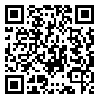BibTeX | RIS | EndNote | Medlars | ProCite | Reference Manager | RefWorks
Send citation to:
URL: http://jeg.khu.ac.ir/article-1-2139-en.html
The Schmidt hammer provides a quick and inexpensive measure of surface hardness that is widely used for estimating the mechanical properties of rock material such as uniaxial compressive strength and Young’s modulus. On the other hand, Schmidt rebound hardness can be used for a variety of specific applications. In the mining industries, it is used to determine the quality of rock, which is common practice when constructing rock structures such as those found in long wall mining, room and pillar mining, open-pit mining, gate roadways, tunnels, dams, etc. However, a number of issues such as specimen dimensions, water content, hammer type, surface roughness, weathering, testing, data reduction and analysis procedures continue to influence the consistency and reliability of the Schmidt hammer test results. This paper presents: a) a critical review of these basic issues and b) avaluate the effect of temperature, moisture and uniaxial compressive stress on Schmidt hammer hardness. It was found that water content has a significant effect on the Schmidt rebound hardness (SRH) of rocks. So that increase of water content substantially reduced the SRH of samples. Temperature also had a considerable influence on the SRH. However, relationship between SRH decreases with increasing temperature for tested samples were linear. Also tests results showed that uniaxial loading of samples increases the SRH values.
| Rights and permissions | |
 |
This work is licensed under a Creative Commons Attribution-NonCommercial 4.0 International License. |






